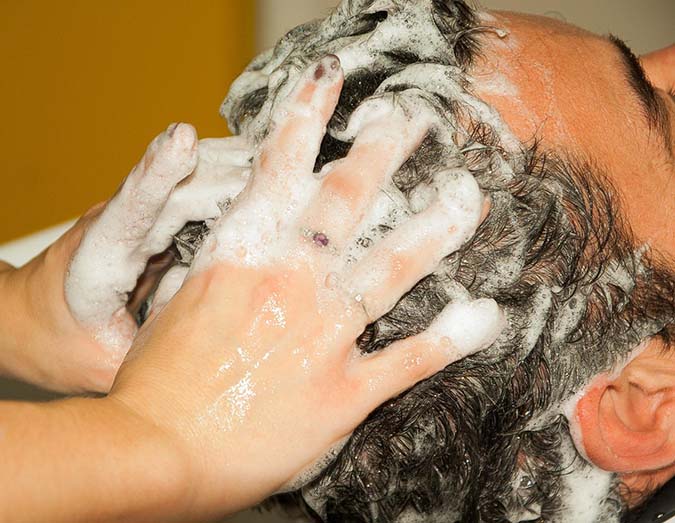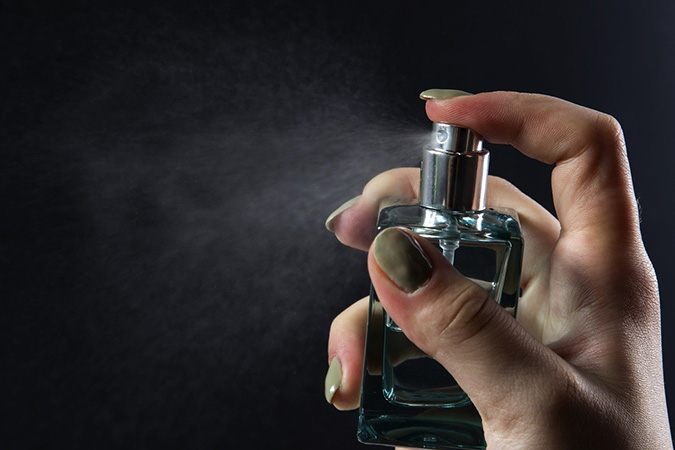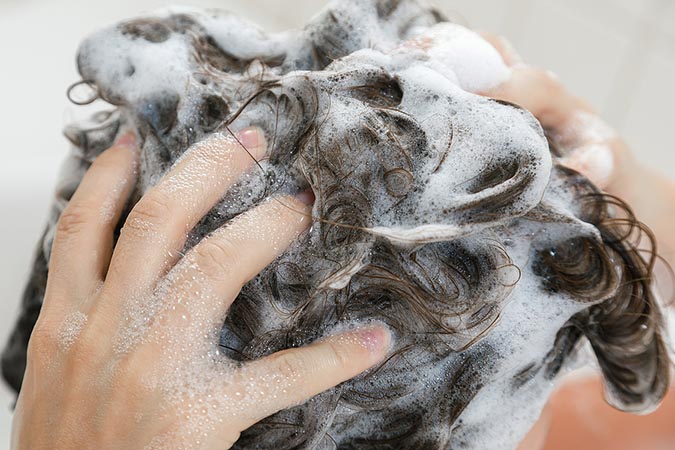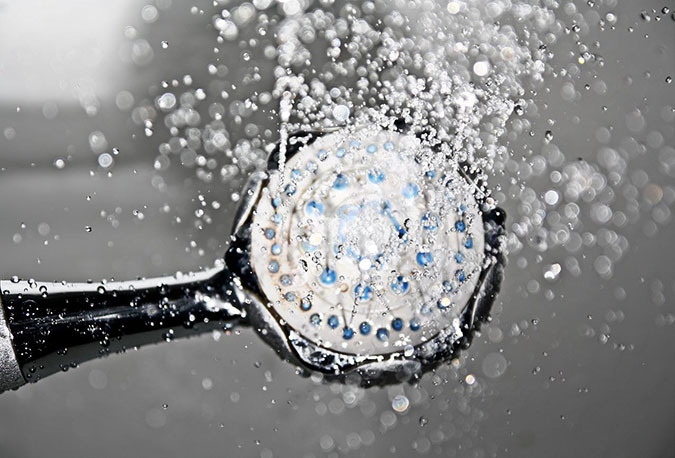Do you know what’s in your hair care? Here are 5 potentially harmful ingredients in shampoo … and a level-headed look at just how concerned you should be.
5 Harmful Ingredients in Shampoo
Washing our hair is one of those tedious chores that half of us put no thought into, and the other half schedule their days around. Unfortunately for those of us who just want to wash our hair and get on with our day, we need to be putting more thought and energy into the safety of our hair care regimen.
You May Also Enjoy:
Learn 63+ plants you can use as soap with our free eGuide!
“Season a Cast Iron Pan in 4 Easy Steps (Video)”
“23+ Surprising Sources of Toxic Aluminum … and How to Detox!”
Not only do many shampoo products contain chemicals that can damage our hair, but some of these chemicals pose major health risks. These risks can be as serious as cancers and other long-term illnesses. This article discusses the most common harmful ingredients in shampoo products—and what we can do to avoid them.
Shampoo Ingredients to Avoid
If you’ve ever looked on the back of your shampoo bottle for an ingredients list, you probably saw a long list of words that only your chemistry teacher would understand.
These types of ingredients aren’t inherently harmful, but we should be aware of what we’re putting on our bodies, especially when our skin absorbs over 60% of the products we put on it.
1. Sulfates

Image by jacqueline macou from Pixabay
One of the most common ingredients in shampoos and hair products is sulfates. Most prominent are sodium lauryl sulfate and sodium laureth sulfate, which act as lathering agents to help remove oils and dirt. While sulfates were previously thought to be linked to cancer, this has recently been disproven. However, sulfates are known to irritate skin and eyes, especially in people with eczema and other dermatological sensitivities. In extreme cases, sulfates may cause:
- Swelling
- Hives
- Itchiness
- Rashes
The best indicator of sulfates in your shampoo is the lathering effect, as shampoos without sulfates typically don’t lather in the shower.
2. Fragrance

Image by AVAKA photo from Pixabay
“Fragrance” is a broad term for the synthetic perfumes that scent shampoos. These products can contain a multitude of chemicals, including phthalates, which are known to cause hormonal imbalances and reproductive health risks.
In addition to our personal health, fragrances can affect the people around us. Even when the scent is subtle or undetectable, airborne fragrances can trigger asthma, migraines, chronic lung diseases, and other conditions in those who come into contact with them.
Not only do these synthetic perfumes affect human health, but they also pose a threat to environmental health. When we wash our hair, these chemicals seep into our waterways, affecting water quality and wildlife populations.
3. Triclosan
Triclosan is another common ingredient in many shampoos. It’s typically used as an antibacterial to reduce bacterial contamination. However, it may support bacterial resistance to antibiotics as it does not act as a thorough enough antibacterial.
You May Also Enjoy:
Learn to make your own plant-based shampoos! (Free eBook)
Some reports suggest that triclosan may act as an endocrine disruptor through its ability to interfere with thyroid hormone metabolism.
Studies also indicate that triclosan may contribute to skin cancer in humans. These studies have not yet been completed or reviewed, but it may be best to avoid the product until further testing is done.
4. Phenoxyethanol

Image by SzaboJanos from Pixabay
Often used as a solvent and preservative in many shampoos, phenoxyethanol is known to be neurotoxic if inhaled, ingested, or absorbed through the skin. Federal regulations limit phenoxyethanol concentrations to be less than 1 percent in products, but people who use multiple products with this chemical may be at higher risk.
On top of skin irritation in those with sensitive skin, phenoxyethanol can lead to reproductive and kidney damage. It’s banned in baby products due to infants’ susceptibility to these types of toxins, but it can also be dangerous to adults who are regularly exposed.
Phenoxyethanol can be referred to on labels by multiple names, including:
- Ethylene glycol monophenyl ether
- 2-Phenoxyethanol
- PhE, phenoxetol
- Beta-hydroxyethyl phenyl ether
5. Parabens
Parabens is another product used to help prevent antibacterial contamination. Common since the 1920s, parabens have recently become a topic of concern for their hormonal disruption. They contain hormones similar to those in the human body, which, when absorbed through the skin, can lead to hormonal imbalances in our bodies. This can lead to a higher risk of cancer and reproductive issues.
You May Also Enjoy:
“7 Toxins Lurking In Your Toothpaste”
The Easiest Way to Make Homemade Apple Cider Vinegar + 29 Uses
These chemicals also pose major environmental hazards. Low levels of parabens can kill coral, and have been detected in waterways, fish, and sediments. This leads to further pollution of our waterways and environments, which in turn affect us through our food chains.
Parabens are generally listed in ingredients as:
- Methylparaben
- Butylparaben
- Propylparaben
Avoiding Bad Ingredients in Shampoo
The amount of toxins in our products can be alarming, but it doesn’t have to be overwhelming. Look for brands that use quality controls to limit the use of toxic chemicals, and stay up to date with new studies that inform us on how our products affect us.
Be aware of the ingredients in your shampoos and cosmetics, and look for products that use natural ingredients. While not all natural ingredients are good, and not all synthetic ingredients are bad, it’s important to understand what our products contain and how they affect us.
What Do You Think?
What shampoo do you use? Do you have any recommendations for safe, natural brands? Let us know in the comments!
______________
The Grow Network is a participant in the Amazon Services LLC Associates Program, an affiliate program designed to provide a means for our team to earn fees for recommending our favorite products! We may earn a small commission, at no additional cost to you, should you purchase an item after clicking one of our links. Thanks for supporting TGN!

The Grow Network is a global network of people who produce their own food and medicine. We’re the coolest bunch of backyard researchers on Earth! We’re constantly sharing, discovering, and working together to test new paths for sustainable living—while reconnecting with the “old ways” that are slipping away in our modern world. We value soil, water, sunlight, simplicity, sustainability, usefulness, and freedom. We strive to produce, prepare, and preserve our own food and medicine, and we hope you do, too!








